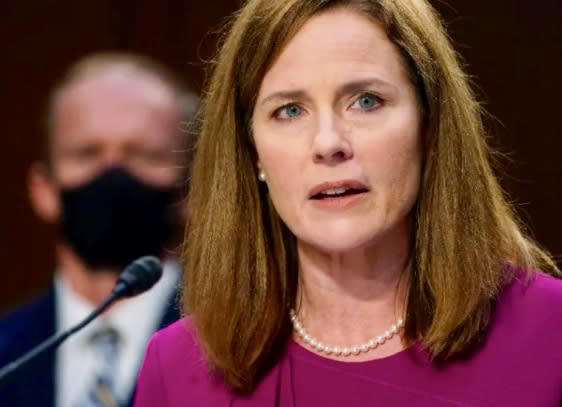In recent judicial developments, Supreme Court Justice Amy Coney Barrett, one of former President Donald Trump’s appointees, has signaled a notable divergence from the stance of fellow conservative Justice Clarence Thomas. This rift has implications for upcoming contentious cases on the court’s docket.
According to Politico, Barrett took a significant step by concurring with Thomas in a trademark case involving anti-Trump T-shirts while sharply critiquing his rationale. This move is seen as a departure from the traditionalist approach associated with Thomas, who tends to rely heavily on historical precedent and originalism in his judicial philosophy.
Barrett’s critique centered on the overemphasis on tradition as a constitutional argument, questioning the theoretical basis for such an approach. She argued that elevating tradition to a dispositive rule effectively creates a judge-made standard akin to the complex legal tests often criticized by conservative jurists when employed by liberal justices.
Her statement, which could be interpreted as a challenge to the conservative legal establishment’s reliance on originalism, is significant in the context of the Supreme Court’s upcoming cases. These include United States v. Rahimi, which addresses the constitutionality of restricting gun ownership for individuals under domestic violence restraining orders, and a pivotal case concerning whether Trump is immune from prosecution related to efforts to overturn the 2020 presidential election.
Politico’s analysis suggests that Barrett’s stance could potentially fracture the court’s conservative bloc on these critical issues. While Justice Thomas is known for his steadfast adherence to originalist principles despite potential backlash, Barrett’s pragmatic approach acknowledges the broader implications of judicial decisions and public perception.
The division among the court’s six conservative justices—comprising Thomas, Alito, Gorsuch, Roberts, Kavanaugh, and Barrett—remains somewhat ambiguous. Justices Alito and Gorsuch appear aligned with Thomas, while Chief Justice John Roberts and Justice Brett Kavanaugh have not clearly signaled their positions, suggesting a nuanced internal debate within the court’s conservative wing.
Overall, Barrett’s divergence from Thomas underscores the complexity and dynamism within the Supreme Court as it navigates contentious legal terrain, where ideological divides and judicial philosophies intersect with the interpretation of constitutional principles and precedent. As these cases unfold, the implications of Barrett’s critique and its potential impact on future decisions will continue to be closely scrutinized in legal and political circles alike.
